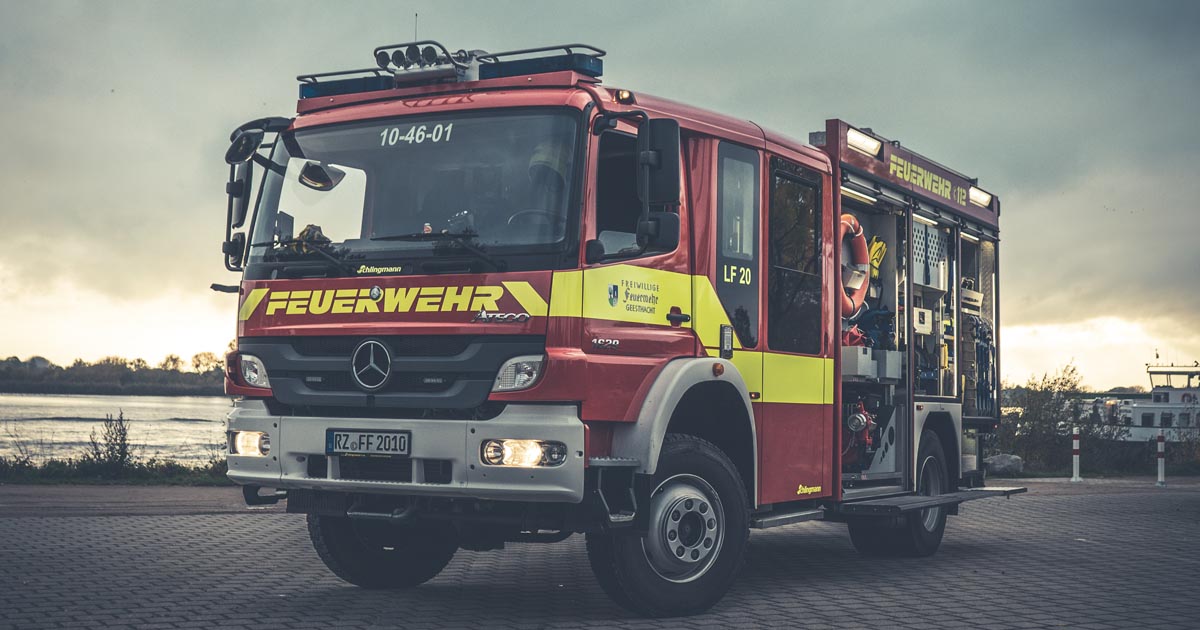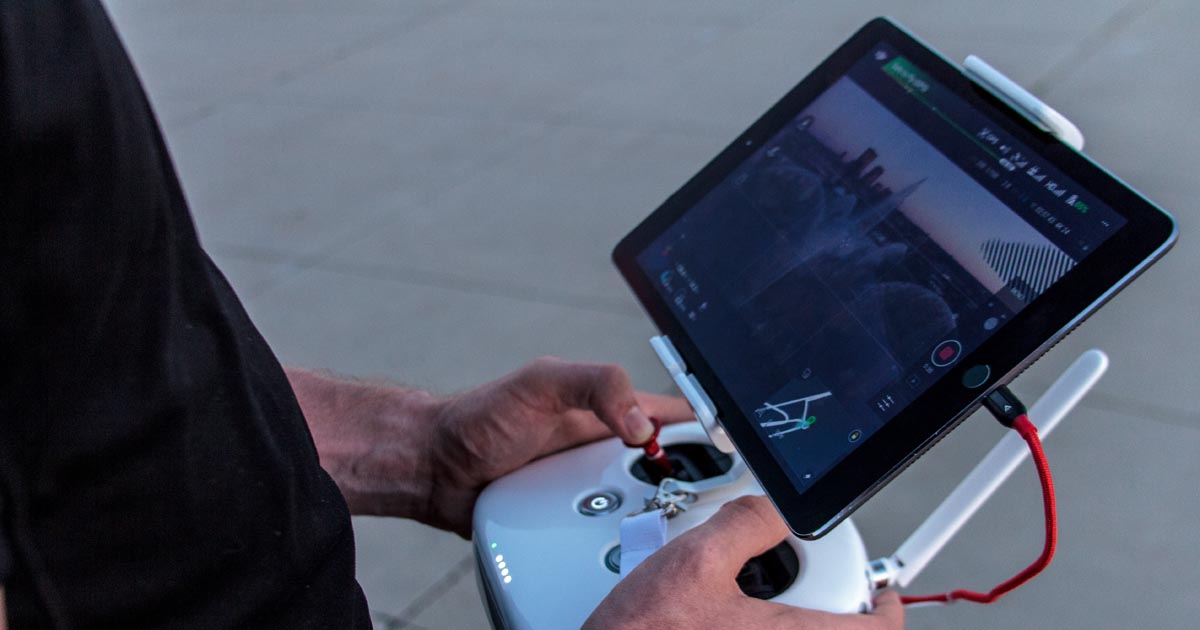The flood disaster of 2021 in Germany revealed serious weaknesses in civil protection: Poor IT, missing sirens, and the exchange between authorities and politics did not work either. Flood warnings from experts came to nothing. To what extent can digitalisation within the fire service help with disaster control?

The warning app Nina was used to send storm messages during the flood disaster, but only ten million Germans installed the app. Some of the app users were not warned because the mobile phone network broke down in many places. One possibility to reach the population would have been sirens. However, the siren network has been thinned out since the end of the Cold War.
But not only the devastating floods, but also global crises such as the pandemic have revealed how inadequate digital warning systems are in Germany. Also, the nationwide warning day in 2020 had not worked. It is obvious that in terms of digitalisation in Germany, there is also work to be done in the area of disaster management. The planned Gaia X Rescue funding project should have received funding as one of the Gaia X hubs - a total of 117.4 million euros had been earmarked for eleven projects. However, this has now been stopped, as no more funds would have been earmarked for it in the 2022 federal budget.
Digitisation of the fire service as part of disaster management is essential. And the possibilities for using digital technology in fire brigades are more multifaceted than many think. This ranges from digital mission planning and good networking among the emergency forces to the use of reconnaissance drones and robots to sensory protective clothing. Digital deployment plans are already part of the new standard in many places. This ensures that one or more firefighting teams are on the scene within a few minutes.
In many operations, not only one fire brigade is deployed, but several. This means that more emergency forces need to be coordinated with each other to enable a fast, safe and efficient response.
Digital solutions for fire and rescue services are already available. Technology companies such as the German automotive supplier ZF are getting on board with its ZF Rescue Connect offering. The ZF Rescue Connect Dashboard is a web-based user interface in whose apps various information can be accessed and viewed. This includes, for example, a live overview of the vehicles and the emergency forces. In addition, the fuel consumption, the condition of the vehicles and much more can be kept in view.
With this system, all emergency and rescue forces in Europe can also be digitally networked with each other. This includes the data of fire brigades, rescue services and other organisations in the security and rescue sector.
Another digital solution is EMEREC from the fire brigade supplier Rosenbauer: an information system for the fire brigade at the scene of an emergency. Via this software tool, all relevant information such as fire protection plans, hazardous material data or vehicle rescue maps can be accessed and used by all emergency forces at any time and from anywhere. This works via specially developed tablets, but also via app on any smartphone or smart device.
Be it planned major events or acute emergencies: It is imperative that fire brigade operations are coordinated optimally and quickly. This means that the procedures of the fire brigade task force as well as individual deployment tactics must be immediately available digitally, depending on the event.
However, digital operational planning includes even more: information, documents and tasks with corresponding links and sensible prioritisation must be clearly available in one place. It must be possible to quickly and clearly record, process and log upcoming tasks or short-term assignments. Ultimately, all information should be made available within a staff management system that is linked to the respective operations control system in such a way that it can be applied directly. For those responsible in the various command centres, this means a great saving of time and effort.
It is essential for emergency managers to be able to get a comprehensive overview of the situation at the scene of an operation within a very short time. This is usually very difficult in the case of disasters in a large area - for example, a forest or wildfire. For such cases, drones have been used more and more frequently for several years. They can capture and transmit images in real time and thus provide valuable data. These are then analysed immediately with the help of digital solutions. Drones equipped with thermal imaging cameras are also used in burning buildings. They can help detect and locate people who are still inside. Drones can also be used to identify the source of a fire or to measure the presence of hazardous substances.
Drones are also helpful when mobile phone networks fail during major disasters. They can be used to transmit information from the scene to the control centre.
It is not only drones that are used in places where human emergency forces cannot reach. In the future, robots will also take over particularly dangerous tasks from firefighters. This is the case in forest fires, on mined terrain or in chemical accidents. The "RobLW" (robotic command vehicle), for example, is a small truck about the height of a knee that serves both as a mobile control centre and as a rolling laboratory. Scientists at the German Rescue Robotics Centre (DRZ) are researching exactly what the fire brigade of the future could look like in cooperation with robots.
Milrem Robotics, an Estonian manufacturer of robotic vehicles, is also developing firefighting robots together with the Dutch foam extinguishing technology company InnoVfoam. More specifically, it is a vehicle that can be operated by firefighters via an app. It has thermal and infrared cameras and can detect chemical hazards at an early stage with the help of gas detectors. Drones can be launched from the vehicle to provide a good overview from above. Other systems and features can be added to this firefighting robot.

In the event of a disaster, firefighters are often exposed to high levels of stress and harmful influences, some of which are difficult to assess. Special clothing can offer protection here. SensProCloth is a system-integrated sensory protective clothing for firefighters and civil protection workers. A system is integrated into the clothing that can simultaneously link the vital data with an in-building localisation of the emergency forces. In addition, this clothing is intended to help with navigation and communication at the scene of an emergency. A "man-machine interface", so to speak.
Engineers at the Dresden University of Applied Sciences (HTW) are also working with partners to develop digitally enhanced protective clothing for firefighters. Holographic projectors, sensors and vibration actuators are to be integrated into the helmets and clothing of the firefighters in order to warn them of dangers as intuitively as possible. The sensors in the helmet are used to pick up external signals such as the ambient temperature or the air supply. These can then be transmitted directly to the wearer's skin through vibration.
In addition, a telemetry system is to be developed that will enable precise monitoring of operations in real time and thus exact evaluation.
Digitisation in Germany is fundamentally lagging behind in many places. A great deal still needs to be done in the area of civil protection. A lot has already changed within the fire service, and much is on the right track. Now, planned projects and those already underway must be rapidly developed and expanded in order to optimally position the fire brigade of the future.
Text: Alexa Brandt
Most popular